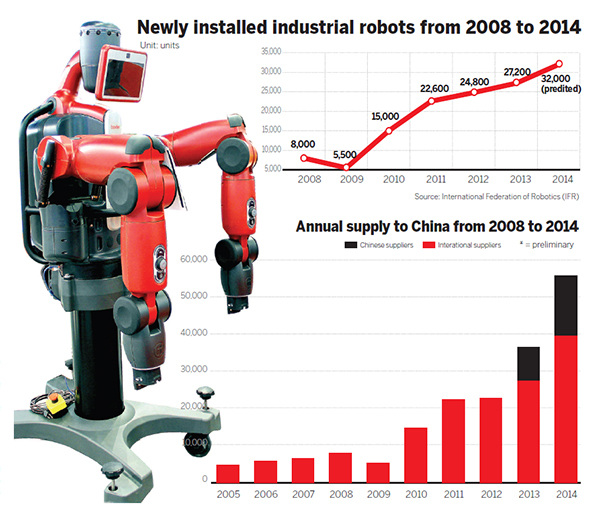
Upgrading factory assembly lines is helping manufacturing companies stay competitive
It might seem like a science fiction novel, but robots are in a factory near you.
As manufacturing costs surge and labor shortages increase, one of the industrial heartlands of China is turning to advanced technologies to stay competitive.
Already incorporated on the frontline of plants in the Pearl River Delta, a major manufacturing region in South China, high-tech production is seen as the long-term answer to future growth.
With industries as diverse as garment manufacturing and smartphone production vying for export orders in a crowded global marketplace, finding that competitive edge is crucial.
"Using 60 industrial robots on a single assembly line, which would have included about 600 workers in the past, now needs just 100," Luo Weiqiang, assistant general manager of Guangdong Everwin Precision Technology Co, which designs, manufactures and sells electronics components, said. "The production efficiency has also greatly improved after the introduction of industrial robots."
Guangdong Everwin, setup in 2010 with a factory in an industrial park in Dongguan, Guangdong province, is planning to use 1,000 robots when it upgrades its production lines this year.
Since recruiting new staff has been a problem because of the labor shortage in the Pearl River Delta, this robotic workforce will do the jobs of 3,000 employees. "The use of smart equipment will help the company tackle the problem of labor shortages," Luo said.
"We will only need to recruit fewer than 200 software technicians and management personnel when the 1,000 industrial robots are installed in the coming months."
The lack of labor has become a major problem as companies develop and expand in Guangdong, which contributes about one fourth of the country's manufacturing trade, or 6.61 trillion yuan ($1.06 trillion), in 2014.
According to the Guangdong human resources and social security authorities, the province needs more than 600,000 to 800,000 new workers. In the Shunde district of Foshan city, in the heart of the Pearl River Delta, labor difficulties are acute.
This manufacturing hub is known for making home appliances, ceramics and furniture. But last year it reported a shortage of 200,000 workers, according to Zhang Peng, deputy director of the Shunde Economy, Science and Technology Bureau.
"Introduction of smart equipments will help solve the problem and improve working conditions for existing staff," Zhang said.
















































